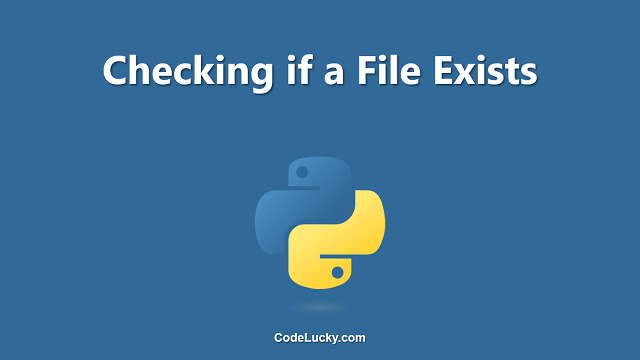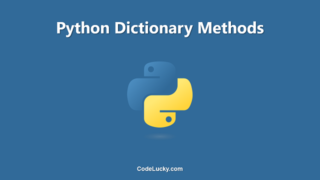The setdefault() method in Python is a built-in method that is used to set a default value for a specified key in a dictionary. This method allows you to set a default value for a key, in case the key does not exist in the dictionary. If the key does exist, the method returns the current value of the key without changing it. This method can be very useful when working with dictionaries, as it eliminates the need to check if a key exists in the dictionary before setting its value.
Syntax
dict.setdefault(key, default)
Parameters
The setdefault() method takes the following parameters:
key: The key of the key-value pair to set a default value for. This parameter is required.default: The default value to set for the key, in case the key does not exist in the dictionary. This parameter is optional.
Examples
Example 1: Setting a Default Value for a Key
Consider the following example, where we set a default value for a key in a dictionary:
student = {'name': 'John', 'age': 25}
student.setdefault('gender', 'Male')
print(student)
In this example, we have created a dictionary called student, which contains the key-value pairs of a student. Then, we use the setdefault() method to set a default value of ‘Male’ for the key ‘gender’, in case the key does not exist in the dictionary. Finally, we print the dictionary, which will be:
{'name': 'John', 'age': 25, 'gender': 'Male'}
As you can see, the key ‘gender’ has been added to the dictionary with the default value ‘Male’, since the key was not previously in the dictionary.
Example 2: Updating the Value of an Existing Key
Consider the following example, where we update the value of an existing key in a dictionary:
student = {'name': 'John', 'age': 25, 'gender': 'Male'}
student.setdefault('gender', 'Female')
print(student)
In this example, we have created a dictionary called student, which contains the key-value pairs of a student. Then, we use the setdefault() method to try to set a default value of ‘Female’ for the key ‘gender’, in case the key does not exist in the dictionary. However, the key ‘gender’ already exists in the dictionary, so the value associated with the key will not be changed. Finally, we print the dictionary, which will be:
{'name': 'John', 'age': 25, 'gender': 'Male'}
As you can see, the value of the key ‘gender’ has not been changed to ‘Female’, as the key already existed in the dictionary and the setdefault() method only sets a default value for a key if it does not exist in the dictionary.
Example 3: Using setdefault() without a Default Value
Consider the following example, where we use the setdefault() method without a default value:
student = {'name': 'John', 'age': 25, 'gender': 'Male'}
student.setdefault('address')
print(student)
In this example, we have created a dictionary called student, which contains the key-value pairs of a student. Then, we use the setdefault() method to try to set a default value for the key ‘address’, in case the key does not exist in the dictionary. However, no default value is provided, so the value associated with the key will be set to None if the key does not exist in the dictionary. Finally, we print the dictionary, which will be:
{'name': 'John', 'age': 25, 'gender': 'Male', 'address': None}
As you can see, the key ‘address’ has been added to the dictionary with the value None, since the key was not previously in the dictionary.
Conclusion
In conclusion, the setdefault() method in Python is a very useful method for working with dictionaries. It allows you to set a default value for a key, in case the key does not exist in the dictionary. If the key does exist, the method returns the current value of the key without changing it. With this method, you can simplify your code and avoid unnecessary checks for the existence of keys in a dictionary.







